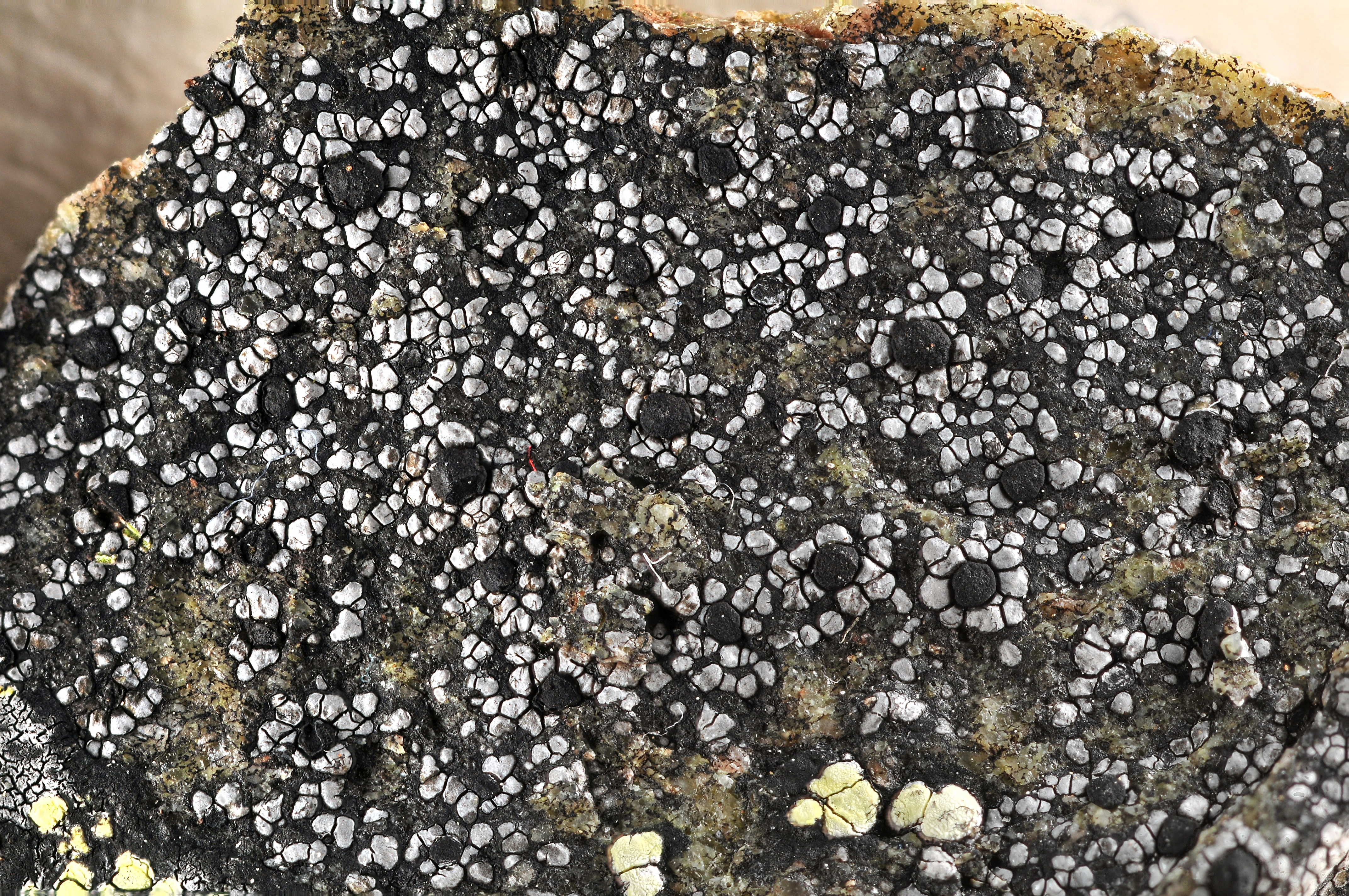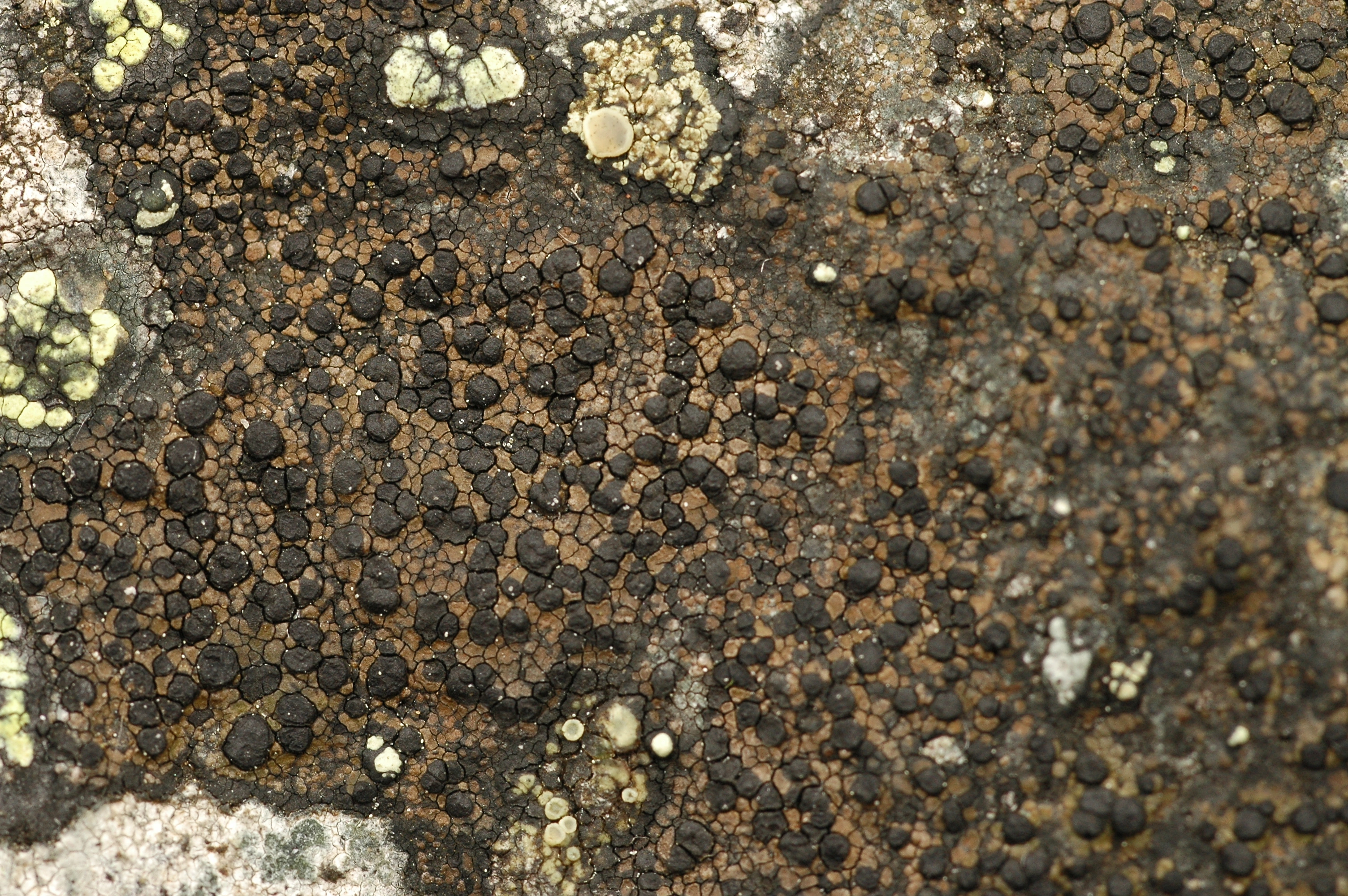Rhizocarpon simillimum
- Innhold
- Morphology
- Chemistry
- Habitat
- Comment
- Look-alikes
Morphology
Thallus areolate, up to 5 cm diam.; hypothallus well developed, black; areolae up to 0.6 mm diam., dark brown, usually with a faintly greyish tinge, dull, contiguous or scattered, orbicular to angular, plane to weakly convex; medulla KI+ dark violet. – Apothecia up to 0.8 mm diam., black, epruinose, orbicular or angular, plane to weakly convex, with a persistent or disappearing margin; excipulum brownish black, K– or K+ faintly red; hypothecium dark brown, K–; hymenium colourless or faintly brown; epihymenium brownish black, K– or K+ faintly red, no crystals or granules in the apothecia; ascospores 8 per ascus, 1-septate, dark brown, 14–18 × 7–9 µm. – Conidiomata not seen.
Chemistry
Stictic and gyrophoric acid, or no lichen substances; spot tests: medulla PD+ orange, K+ yellow, C+ red or PD–, K–, C–.
Habitat
On calciferous schist. Very rare.
Comment
The species is poorly understood in the Nordic countries. The description is based on Norwegian, Swedish and Italian material. The only published Norwegian specimen was lost during the war, and a possible duplicate is a Buellia species. Two recent Norwegian collections are believed to represent R. simillimum, however.

